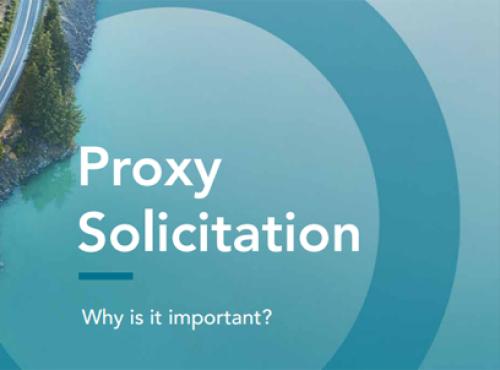An examination of the connection between 'data-centric' IR and building credibility with external audiences
The IR profession has taken on an increasingly analytical bent as professionals hailing from finance and other research-driven fields have entered the fray. As this new type of IRO has become more prevalent, the visibility afforded the role has also increased, serving to elevate the overall status of the corporate IRO.
IR’s primary objective must be to establish credibility with the investment community, the financial media and your key stakeholders. To do so, you need to look at the world the way investors do – and in their world, information is the strongest form of currency. IROs have to be just as data-driven.
In ‘Next-generation IRO’, a white paper available at www.irmagazine.com, I provide a road map to enhancing your credibility with external audiences using a ‘data-centric’, market intelligence-focused IR program. Here are some highlights:
1. Market intelligence
Always be aware of the relevant news, data, peer announcements, investor sentiment, independent analysis and other research that may affect trading in your stock or sector. Start with an IR program audit, benchmarking your program against your peers’. Regular investor perception studies can show how well buy-side audiences rate the effectiveness of your communications.
A sell-side analyst model matrix showing price targets, ratings and estimates helps determine an internal ‘consensus’ and reveals the various levers in analyst models so you can check their work. I also recommend creating an IR dashboard: a blog-like message center with everything from investor meeting feedback to highlights of a competitor’s earnings call.
2. IR messaging
With a foundation of access to and analysis of information, develop your IR message along the same lines. For example, every good website begins with a top-down audit, reviewing what you have to disclose and what you’d like to disclose. The other way IR messaging should be data-centric is that credibility relies on facts, from the annual report to the quarterly Q&A document.
3. Targeting
This is typically a key part of any IR program: identifying the institutional investors, retail investors, sell-side analysts, employees and other constituents who should be getting your IR message. Institutions are typically the main focus, targeted according to industry exposure, investment style and/or market cap.
While 13F filings are often dismissed as stale by some US IROs, they can be helpful in tracking long-term trends within your company or sector. Also review beneficial filers (13G and 13D) that may arise in your base, particularly if your company is a candidate for shareholder activism.
While many companies use stock surveillance services, an active IRO who’s on the road more than 25 percent of the year should have a general awareness of the relevant players.
4. Tactical outreach
There are many methods of outreach, including investor conferences, non-deal roadshows, sales force ‘teach-ins’, site visits and bus tours. Whatever the event, make sure to calculate net costs and benefits, including whether it helps target a desired type of analyst or investor.
For investor conferences, consider a broker’s reputation and distribution and whether it covers your stock. If you are a small-cap or micro-cap issuer, your company could get lost in the shuffle at a generalist conference, so look for more specialized events. Also, when planning a non-deal roadshow, consider going with an analyst who doesn’t cover your company; it’s a good opportunity to meet the analyst while opening up a potential new institutional account base not familiar with your story.
5. Program measurement
There are certain measurable aspects of an IR program: optimal shareholder mix, analyst coverage, trading volume and short interest, to name but a few. The overall impact of the program should not be measured merely by the performance of a company’s stock.
That said, according to a survey by Rivel Research Group, portfolio managers and buy-side analysts attribute as much as a 10 percent premium to firms that manage an effective investor communications program. Conversely, they also claim an average discount of 15 percent for those demonstrating poor investor communications.
With a data-centric approach, IROs are at a distinct advantage, as they begin to perceive decision making through the eyes of the investment community. This does more than build credibility with Wall Street: an effective IR program is a platform from which the company jockeys for position in the competition for investor capital over the long term.










